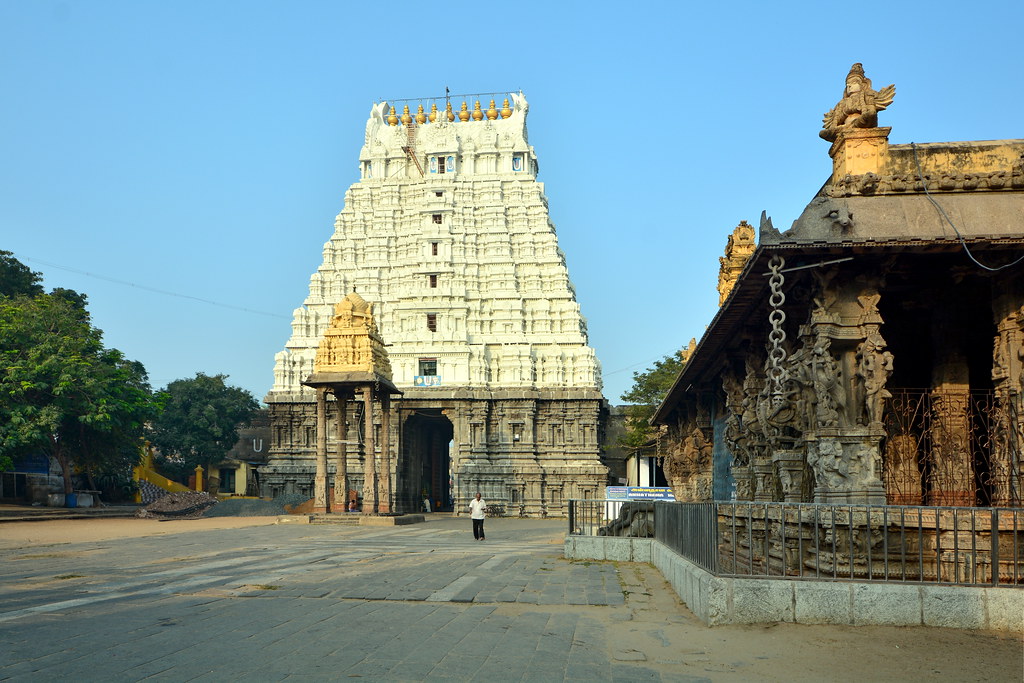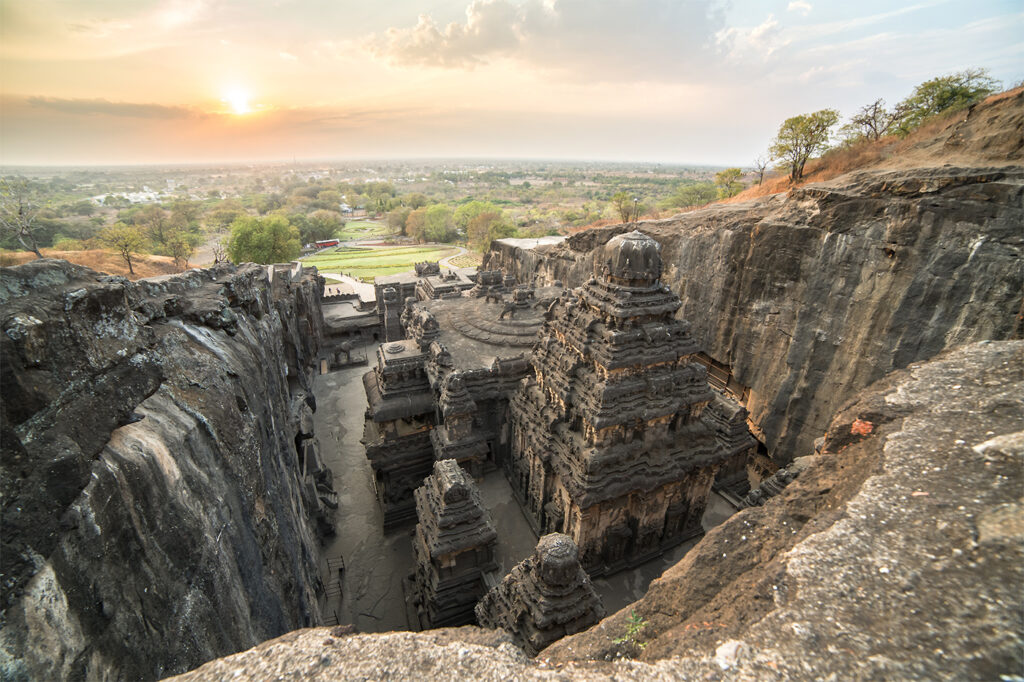
Exploring the Timeless Sanctuaries: The Oldest Hindu Temples of the World
Hinduism, one of the oldest religions in the world, is a spiritual tradition that reveres its deities in sacred spaces known as temples. These temples are not merely places of worship, but also repositories of ancient culture, art, and architecture. Many Hindu temples date back thousands of years, their very stones echoing with the prayers and rituals of countless generations. This article delves into the importance, beliefs, and historical significance of some of the oldest Hindu temples in the world. We will also explore other notable landmarks in their respective cities, adding context to the sanctity and cultural heritage that surround these ancient shrines.
Mundeshwari Devi Temple (Bihar, India)
The Mundeshwari Devi Temple, located in Kaimur district of Bihar, is often cited as the oldest functioning Hindu temple in the world, dating back to 108 AD. Dedicated to Lord Shiva and Shakti (as Mundeshwari Devi), this temple represents an ancient form of Shakti worship. The temple’s octagonal structure is unique and showcases architectural styles that predate many of the more famous Indian temples.

Belief: Devotees believe that worshiping at this temple brings peace, prosperity, and the fulfillment of wishes. The temple’s dual dedication to Shiva and Shakti also emphasizes the balance of masculine and feminine energies in the cosmos.
Other Important Places in Kaimur: Kaimur is home to the Kaimur Wildlife Sanctuary, a natural paradise for wildlife enthusiasts. The Kaimur Range also offers scenic trekking opportunities for travelers seeking adventure.
Kailasa Temple, Ellora Caves (Maharashtra, India)
The Kailasa Temple is a part of the Ellora Caves, a UNESCO World Heritage Site, and is renowned for being carved out of a single rock. Dating back to the 8th century, this monolithic temple dedicated to Lord Shiva is a marvel of ancient engineering. It was built under the reign of the Rashtrakuta dynasty, symbolizing devotion and artistic excellence.

Hindus regard Kailasa Temple as a symbol of spiritual ascension, with its layout mirroring Mount Kailash, the mythical abode of Lord Shiva. It’s believed that meditating or praying here enhances spiritual wisdom and divine blessings.
Other Important Places in Ellora:
Ellora is also famous for its Buddhist and Jain caves, which illustrate India’s diverse religious history. Nearby Aurangabad hosts the majestic Bibi Ka Maqbara, often referred to as the “Taj of the Deccan.”
3. Shree Jagannath Temple (Puri, India)
Importance: Built in the 12th century, the Jagannath Temple is one of the four sacred Char Dham pilgrimage sites. Located in Puri, Odisha, this temple is dedicated to Lord Jagannath (a form of Krishna), along with his siblings, Balabhadra and Subhadra. Its annual Rath Yatra, or chariot festival, attracts millions of devotees worldwide.

Belief: It is believed that visiting the Jagannath Temple purifies the soul and helps one attain moksha (liberation). The temple is considered a manifestation of Krishna’s eternal presence on earth.
Other Important Places in Puri: Besides the Jagannath Temple, Puri is famous for its pristine beaches and the nearby Konark Sun Temple, another UNESCO World Heritage Site.
4. Vaikuntha Perumal Temple (Kanchipuram, India)
Importance: This Dravidian-style temple, built in the 7th century by the Pallavas, is dedicated to Lord Vishnu. It stands in Kanchipuram, one of India’s seven moksha-puris (sacred cities that offer salvation). The temple is famed for its intricately carved pillars and walls, which depict the history of the Pallavas.

Belief: Devotees believe that worshipping Lord Vishnu here grants them eternal bliss and removes all obstacles in life. Kanchipuram itself is considered a spiritual powerhouse, with a rich temple tradition.
Other Important Places in Kanchipuram: Kanchipuram is known for its silk sarees and is also home to other temples like Kamakshi Amman Temple and Ekambareswarar Temple, making it a significant pilgrimage destination.5. Brihadeeswarar Temple (Thanjavur, India)
5. Brihadeeswarar Temple (Thanjavur, India)
Importance: Built by the Chola king Rajaraja I in 1010 AD, Brihadeeswarar Temple (also known as the Big Temple) is a masterpiece of Dravidian architecture. This UNESCO World Heritage Site is dedicated to Lord Shiva and boasts one of the tallest temple towers in the world.

Belief: The temple symbolizes the grandeur of Tamil culture and Shiva’s omnipresence. Many believe that visiting Brihadeeswarar Temple enhances spiritual consciousness and grants Shiva’s blessings.
Other Important Places in Thanjavur: Thanjavur is home to the Royal Palace, housing an art gallery with Chola bronzes. The city is also renowned for its traditional Tanjore paintings.
6. Somnath Temple (Gujarat, India)
Importance: Somnath is one of the twelve Jyotirlingas (sacred abodes of Lord Shiva), believed to have been originally built around the 7th century. Destroyed and rebuilt multiple times, the current structure was erected in 1951, signifying resilience and devotion.

Belief: It is believed that Somnath is where Lord Krishna left his mortal body. The temple attracts millions seeking Shiva’s blessings, and it’s a site where devotees come to cleanse their past karma.
Other Important Places in Somnath: The nearby Prabhas Patan Museum offers insight into the ancient heritage of Gujarat. Travelers can also visit the scenic Gir National Park, home to the Asiatic lion.
7. Lingaraja Temple (Bhubaneswar, India)
Importance: Dating back to the 11th century, Lingaraja Temple is a prime example of Kalinga architecture. Dedicated to Lord Shiva, this temple in Bhubaneswar is among the most significant temples in eastern India.

Belief: The presiding deity, Harihara (a combined form of Shiva and Vishnu), is worshipped for peace, protection, and prosperity. Pilgrims believe that praying here brings salvation and divine grace.
Other Important Places in Bhubaneswar: Bhubaneswar, known as the “Temple City,” also hosts the Rajarani and Mukteswar temples. Nearby is the Udayagiri and Khandagiri Caves, a site of ancient Jain heritage.
8. Meenakshi Temple (Madurai, India)
Importance: Meenakshi Temple, a 12th-century marvel, is dedicated to Goddess Meenakshi (an avatar of Parvati) and Lord Sundareswarar (Shiva). It stands in the ancient city of Madurai and is famous for its towering gopurams (entrance towers) and vibrant festivals.

Belief: The temple is a focal point for fertility, love, and marriage, and it’s believed that worshipping Goddess Meenakshi brings harmony and prosperity in relationships.
Other Important Places in Madurai: Madurai is home to the Thirumalai Nayak Palace and the Gandhi Memorial Museum. The city’s rich history and cultural depth make it a major tourist destination.
9. Vishwanath Temple (Varanasi, India)
Importance: Varanasi’s Kashi Vishwanath Temple, dedicated to Lord Shiva, is one of the most revered temples in India. Though the current structure dates back to the 18th century, the temple’s origins are ancient, and it is believed to have been a part of the original Jyotirlingas.

Belief: It is believed that a visit to Kashi Vishwanath Temple and a dip in the sacred Ganges helps liberate one’s soul from the cycle of life and death.
Other Important Places in Varanasi: Varanasi is a spiritual hub with the Ganga Ghats, Sarnath (a major Buddhist site), and numerous temples lining the river.
10. Konark Sun Temple (Odisha, India)
Importance: A 13th-century architectural wonder, the Konark Sun Temple is dedicated to Surya, the Sun God. Built in the shape of a colossal chariot, this UNESCO World Heritage Site is an extraordinary example of ancient Indian craftsmanship.

Belief: Devotees worship Surya for health, vitality, and success. The temple symbolizes the passage of time, with its intricate carvings narrating celestial and earthly tales.
Other Important Places in Konark: The nearby Chandrabhaga Beach is a serene getaway for visitors, and the annual Konark Dance Festival showcases Odisha’s cultural richness.
Conclusion
The oldest Hindu temples not only bear testimony to the deep-rooted spiritual traditions of India but also reflect the artistic and architectural prowess of ancient civilizations. These sacred spaces are powerful symbols of devotion and perseverance, transcending time and connecting the present with a glorious past.





Responses